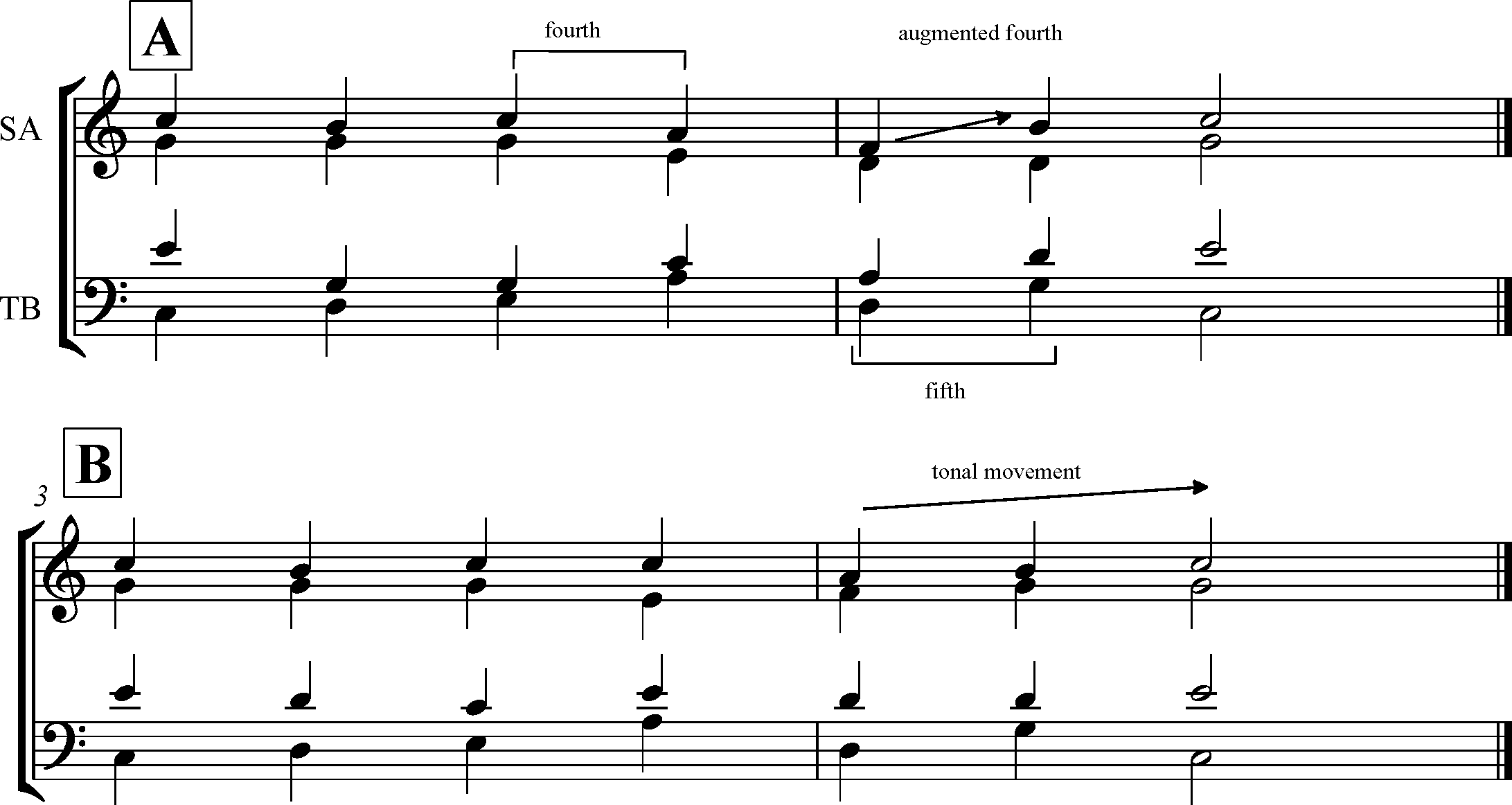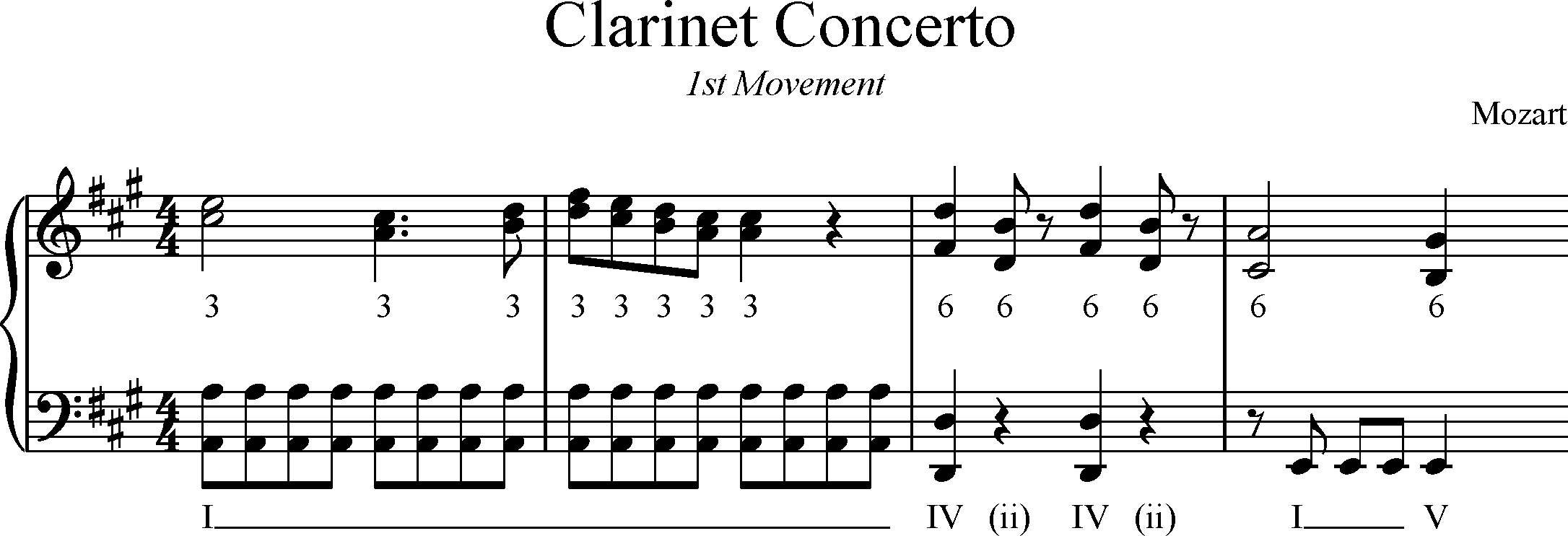B3 | Harmony notes
Harmony notes leading to two-part homophony
- We discussed the intervals between the notes of the scale in units A1 and B1.
- This time, we’ll be discussing the intervals between notes that are played against each other
- These are called harmonic intervals.
- A harmonic interval can be measured by counting from the lower of the two notes staring on« 1 ».
a. State how many half-tones there are between the following intervals:
Fig. 1

| 2nd | 3rd | 4th | 5th | 6th | 7th | 8th |
| Major | Major | Perfect | Perfect | Major | Major | Perfect |
b. Describe the following intervals. The key is B♭ major.
Fig. 2
Describing Intervals

- There are two types of harmonic interval:
- Consonant – a pleasant sound/pleasing to the ear
- Dissonant – a harsh sound to the ear
- The intervals of the 3rd, 6th and 8th are consonant
- The intervals of the 2nd and 7th are dissonant
- The intervals of the 4th and 5th are open.
In a major scale the intervals of the 3rd, 6th and 7th are called major.
In a minor scale the intervals of the 3rd, 6th and 7th are called minor.
Traditionally, composers would avoid parallel intervals of the 4th, 5th and 8th. The intervals of the 3rd and 6th are acceptable – look at figure 3 below. Therefore when composing in the style of composers from the Baroque and Classical periods, you shouldn’t have, for example, two intervals of a 4th between the same parts. Look at the example below
Fig. 3
Avoiding parallel intervals

Also, there is a melodic leap of an augmented 4th in the soprano part in version A. Notice how version B is smoother and avoids parallel intervals.
Here is the opening of Mozart’s concerto for clarinet arranged for piano. Notice that the composer is using a series of consonant intervals in the upper part.
Fig. 4
